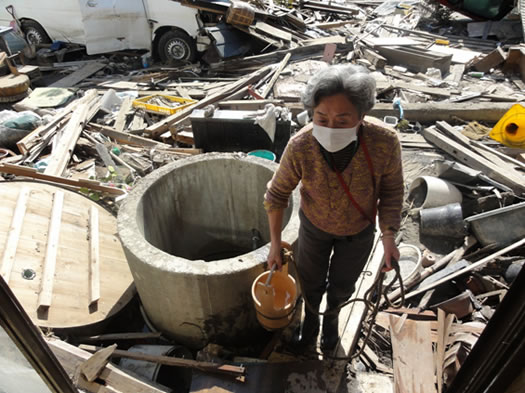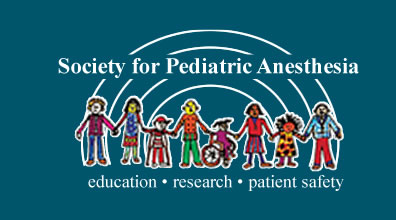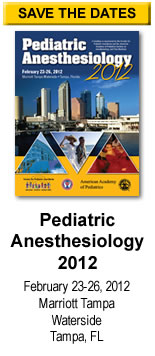Japan’s Natural Disaster
Koichi Yuki, MD
Instructor, Department of Anesthesiology, Perioperative and Pain Medicine
Children’s Hospital Boston
Shoichi Uezono, MD
Chair and Professor, Department of Anesthesiology
Jikei University, Tokyo
Katsuyuki Miyasaka, MD, PhD, FAAP
Designated Professor, Department of Anesthesia and Perianesthesia Nursing
St Luke’s International Hospital and College of Nursing, Tokyo
Photos courtesy of Mr. Y. Sata of Newport Medical Instruments, taken in late March, 2011

The main community hospital in Rikuzentakata, Iwate prefecture was submerged in water to the 4th floor. Patients were carried to the rooftop and rescued by helicopter after spending the cold night outside. Not all patients survived. This lone building still stands, but it is a useless shell in a land where all houses and structures have been swept away by the tsunami. Nothing else is left.
Japan was hit by a devastating earthquake and tsunami on March 11, 2011. At the time of this writing, aftershocks continue, but have decreased significantly. Over 15,000 people lost their lives, over 8,000 remain missing, and hundreds of thousands of lives remain disrupted. Collateral damage to the Fukushima Daiichi nuclear reactors created another emergency, leading to heated worldwide media attention.
Radiation exposure to the populace has been kept to low levels, but disruption to the lives of people who had to be evacuated from dangerous areas and panic regarding personal danger from Japanese products has led to severe consequences for the Japanese economy and the people who worked and lived in the radiation evacuation zones. Disruptions in the electricity supply affected transportation, businesses, and daily life. We hope these challenges will allow Japan to lead the world in developing an energy-saving lifestyle and increased use of renewable energy.

A once submerged ventilator – standing in the ruins
Disaster medical assistance teams (DMAT) were activated soon after the natural disaster, but were met by logistical difficulties. Damage to medical facilities, transportation, and communication networks caused problems in deployment and delivery of supplies. Emergency triage for trauma victims was not that effective because over 95% of the victims died due to immediate drowning in the tsunami.
Unlike in the Kobe earthquake disaster in 1995, the number of trauma casualties from the earthquake itself was small. Primary care was important, especially for people who evacuated to hundreds of makeshift shelters. They were crowded together in damaged facilities with extremely limited heat, food and water in very cold weather. Hygiene was a problem, causing concern in the medical community about potential epidemics of pneumonia and diarrhea.

A woman at a water well personifying hope and determination
against overwhelming odds
A large number of people in the affected regions were elderly, and were taking medications for chronic conditions such as high blood pressure, diabetes, and cardiac conditions. There were severe shortages of medication, no records of what people had been prescribed, and limited numbers of physicians available to write new prescriptions for routine medications.
Hospitals from across Japan sent medical teams to facilitate primary care, but they faced difficult circumstances. There were no basic necessities at the sites and medical teams had to provide their own supplies, including food, water, and places to sleep. There was no organizational structure to oversee what was needed or where personnel and goods should be deployed, such that medical teams and other volunteers were unable to work efficiently or make maximal use of available resources.
Unfortunately, these circumstances resulted in deaths of survivors in some evacuation camps including, for example, people who were unable to access routine dialysis treatment. Others developed Legionella pneumonia a month after the tsunami, possibly from dust-borne contamination. Aside from the aforementioned medical problems, mental and psychological cares are important issues. Devastating loss can lead to post-traumatic stress disorder, and is particularly a concern in children who have lost their caregivers. Public health centers have sent mental care teams to the affected areas, but long-term follow-up is needed. Previous experience gained from dealing with the aftermath of the earthquake in Kobe is an important resource.
Medical personnel from outside Japan also have provided emergency assistance. Rescue and relief teams from numerous countries arrived soon after the disaster to look for survivors and deliver care and supplies to the affected areas, including a big effort by the U.S. military. The United Nations Disaster Assessment and Coordination team (UNDAC) was deployed to support operations by the United Nations. Israel brought a portable hospital and medical team with interpreters. This was the first foreign medical team to be allowed to provide limited medical care in Japan without a Japanese license, under an emergency law created to deal with the catastrophe.
Language constraints are an important reason that taking advantage of medical expertise from overseas is difficult. Grassroot level activities are an important resource, providing funds, expertise, and moral support. For example, in Boston, Japanese physicians set up a group called the “Boston-Japan Medical Relief Initiative” to help with medical needs in Japan. Despite the existence of these support teams, a system to explore what is needed in the affected areas and how to coordinate and utilize available resources efficiently remains to be established.
What is the role of anesthesiologists in these events? There were not many trauma cases from this natural disaster. However, a severe shortage of medical supplies, equipment and electricity impaired the ability of hospitals to provide surgical care in the stricken area. While some scheduled cases could be postponed, obstetric and neonatal cases, for example, required immediate attention. Hospitals in Tokyo and other areas in Japan were mobilized to accept emergency cases. Anesthesiologists can play an important role by making arrangements for the optimal distribution of resources, including personnel. The Japanese Society of Anesthesiologists set up a website to help medical professionals communicate with each other to mobilize supplies.
Large numbers of people in Japan and around the world have contributed generously to collect funds for the victims of the disaster. A large number of people have lost their homes or have been forced to evacuate. Temporary housing is required on a large scale. People have lost loved ones, their livelihoods, and savings. It is estimated to be the most expensive natural disaster on record. The Japanese economy will be put to the test for at least the next several years. Continuous financial support over the long term will be needed to continue the recovery process over the extended length of time that it will take to recover. We ask those of you who would like to help to please make donations and contributions to the sites listed below.
While the current situation suggests that Japan is emerging from the initial stages of panic and chaos, there are many issues that will affect recovery over the long term.
- Relief for the victims
- Bankruptcy of companies due to economic conditions
- Loss of job opportunities
- Electricity shortages
- Recovery of the affected areas
- Radiation contamination
What can we do? There is no one answer or the right way. Relief efforts are needed in almost every aspect of life; hands-on work in the affected areas, volunteering to help relocated victims, supporting and rebuilding a better medical care system, donations, praying, etc. The people of Japan are united in facing this disaster and have come together to work through its aftermath.
We are touched deeply by the compassionate response from people around the world with heartfelt offers of sympathy and generous donations of expertise and money for rebuilding the lives so irrevocably changed by this disaster. This is a time of soul-searching for the people of Japan. How can we show that we care? How can we continue forward without forgetting? What can we do in our own lives to honor those whose lives were lost or ruined?
We appreciate your support and hope you will continue to keep us in your hearts and thoughts.
Links for donations:
Japan North America Medical Exchange Foundation (Janamef)
http://www.janamef.or.jp/index.html
Janamef will shortly open a disaster fund account and collect donations to help restore the medical system in the disaster area through medical exchange and other internationally related activities. For inquiries, please contact Janamef at janamef1988-info@janamef.or.jp.
American Red Cross https://american.redcross.org/site/Donation2?5052.donation=form1&df_id=5052&
Japan Red Cross
http://www.jrc.or.jp/english/relief/l4/Vcms4_00002070.html
Save the Children
http://www.savethechildren.org/site/c.8rKLIXMGIpI4E/b.6621121/k.3D08/
Japan_Earthquake_Tsunami_Relief.htm
Here is a famous Japanese poem “Ame ni mo makezu” (Be not defeated by the rain) written by Kenji Miyazawa who came from the area affected by the earthquake (from the English translation at http://www.kenji-world.net/english/). It embraces some of the traits seen in the survivors that have inspired so many people in Japan and around the world.
Be not defeated by the rain, nor let the wind prove your better
Succumb not to the snows of winter. Nor be bested by the heat of summer.
Be strong in body. Unfettered by desire. Not enticed to anger. Cultivate a quiet joy.
Count yourself last in everything. Put others before you.
Watch well and listen closely. Hold the learned lessons dear.
A thatch-roof house, in a meadow, nestled in a pine grove's shade.
A handful of rice, some miso, and a few vegetables to suffice for the day.
If, to the East, a child lies sick: Go forth and nurse him to health.
If, to the West, an old lady stands exhausted: Go forth, and relieve her of burden.
If, to the South, a man lies dying: Go forth with words of courage to dispel his fear.
If, to the North, an argument or fight ensues:
Go forth and beg them stop such a waste of effort and of spirit.
In times of drought, shed tears of sympathy.
In summers cold, walk in concern and empathy.
Stand aloof of the unknowing masses:
Better dismissed as useless than flattered as a "Great Man".
This is my goal, the person I strive to become.


 Click
Click 